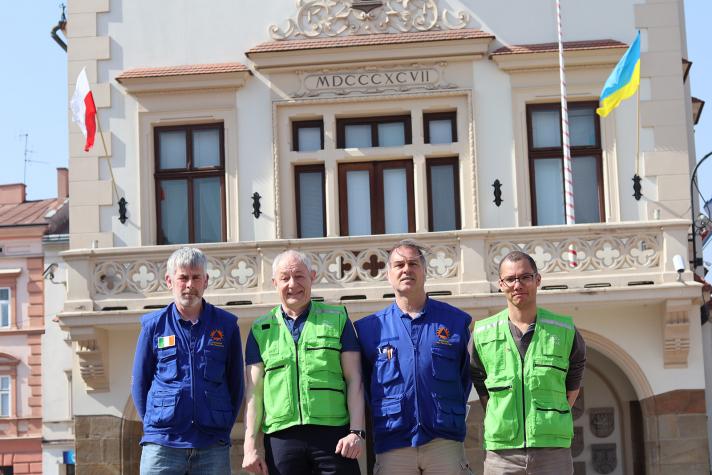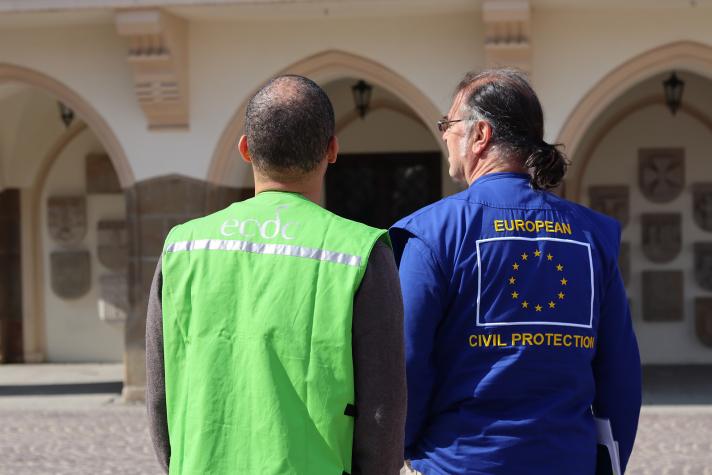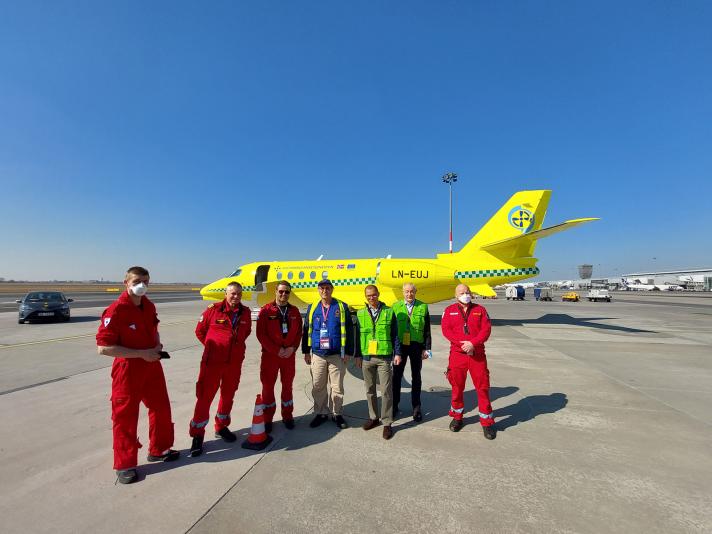In response to Russia’s military aggression against Ukraine in February, the European Commission is running its largest-ever operation under the EU Civil Protection Mechanism.
Teams of civil protection experts are on the ground in Poland, Moldova and Slovakia to help coordinate incoming assistance – over 35,000 tonnes so far.
4 team members in Poland told us how aid gets where it is most needed and shared their impressions from the ground.
A unique response to a unique crisis
The war in Ukraine has caused the worst humanitarian catastrophe since World War II. More than 12 million people have been forced to leave their homes, half of them fled to neighbouring countries.
Panos Katsikopoulos, from the General Secretariat for Civil Protection in the Greek Ministry for Climate Crisis and Civil Protection, is working as a civil protection team leader in Poland. According to him, “this is a unique emergency.”
Therefore, the EU’s civil protection response has taken a unique shape.
All 27 EU countries, plus Norway and Turkey, have offered material assistance ranging from field hospitals, ambulances, and medicines to food, clothes, tents, firefighting equipment, and generators. The items are delivered directly to Ukraine or channelled through logistical hubs in Poland, Romania, and Slovakia.
Emergency healthcare supplies from the rescEU stockpile have also been mobilised. Hundreds of severely ill Ukrainian patients are being transferred to hospitals in other EU countries through coordinated medical evacuations operations.
Just days after Russia’s invasion, EU civil protection experts arrived in Poland to set up the first and largest operation to support the transportation of relief items to Ukraine. Shortly after, similar hubs were established in Romania and Slovakia as part of a contingency plan to send humanitarian assistance across the Ukrainian border via alternative routes.
“This is just another example of the EU Civil Protection Mechanism’s ability to adapt to the particularities of each emergency thinking ahead and reaching out to the appropriate stakeholders within the Member States, utilising new tools and applying alternative ways of delivering according to its mission,” Panos says.
“Being part of a team with members from different countries is a big strength. I am a firm believer of a deeper connected European Union for the future, acting more as one. EU civil protection makes me believe in that,” - says Panos Katsikopoulos.

Bringing in other EU services for a better response
2 medical experts from the European Centre for Disease Prevention and Control (ECDC) joined the team to support Polish authorities. They helped strengthen early warning and rapid response systems, surveillance data flows and other public health activities.
“In Poland, the Ukrainian population is being registered with access to health care but making sure that existing early warning and alert systems can detect outbreaks in this population is very important. Some refugees already left for neighbouring countries, so some of the information collected may be of relevance for other EU countries, and even to the rest of the world,” explains ECDC expert Julien Beauté.
“People arrive here in distress. It is very impressive to witness the warm welcome by the Polish people, efforts of the volunteers from different countries, NGOs, private organizations and the willingness of EU Member States to help,” says Julien Beauté.
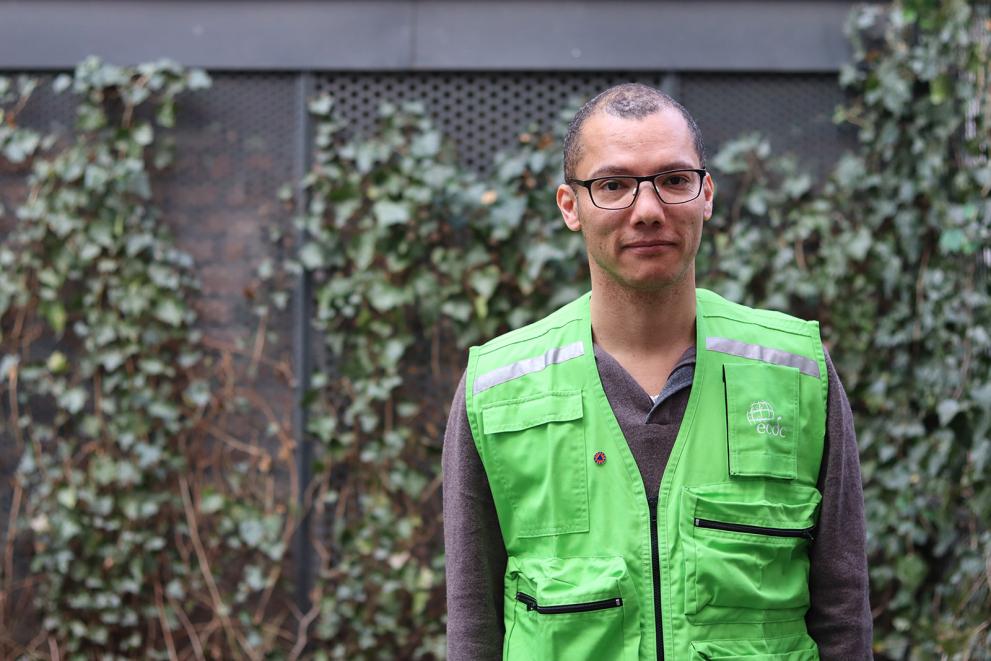
The presence of medical experts on the ground is also an additional asset for medical evacuations of chronically ill patients. These evacuation operations are supported by the new rescEU medical evacuation plane, financed by the EU, and hosted by Norway.
Piotr Kramarz explains how this process works.
“We participated in medical evacuation of a child with advanced tuberculosis who had to be treated outside Ukraine. They were treated and stabilised in Warsaw first. Once the condition improved to the level allowing them to continue travelling, the evacuation was completed, and the child accompanied by the parent were taken to Norway,” he says.
“Displaced Ukrainians are grateful for the help, and our collaboration with the Polish authorities is excellent at all levels,” says Piotr, who is Polish himself and understands Ukrainian.
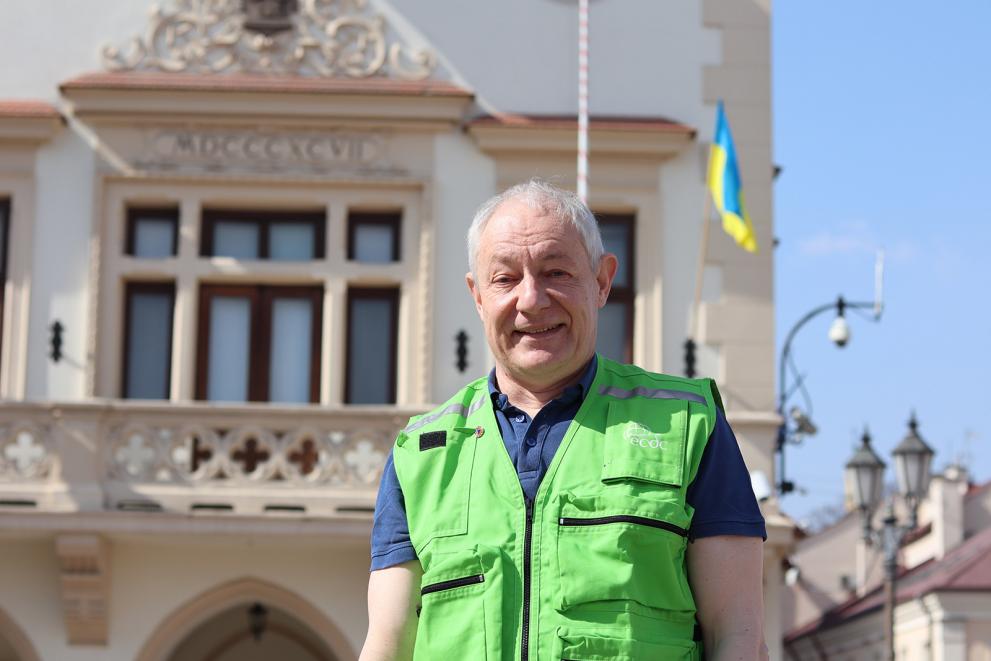
‘Desire to do the right thing’
The work of civil protection experts is one of many ways the EU assists Ukraine and its people with emergency assistance.
It supports and complements the efforts of hosting communities which impressed Paul Rock, another EU civil protection team member and lead for emergency management from Ireland National Directorate for Fire and Emergency Management:
“We joined a coordination meeting in the central railway station. 17-18 years old volunteers passionately told senior officials of what needed to be done or improved. Their desire to do the right thing and the level of coordination were fantastic.”
Story by Begum Iman, EU Civil Protection and Humanitarian Aid Operations.
Publication date: 31/05/2022

